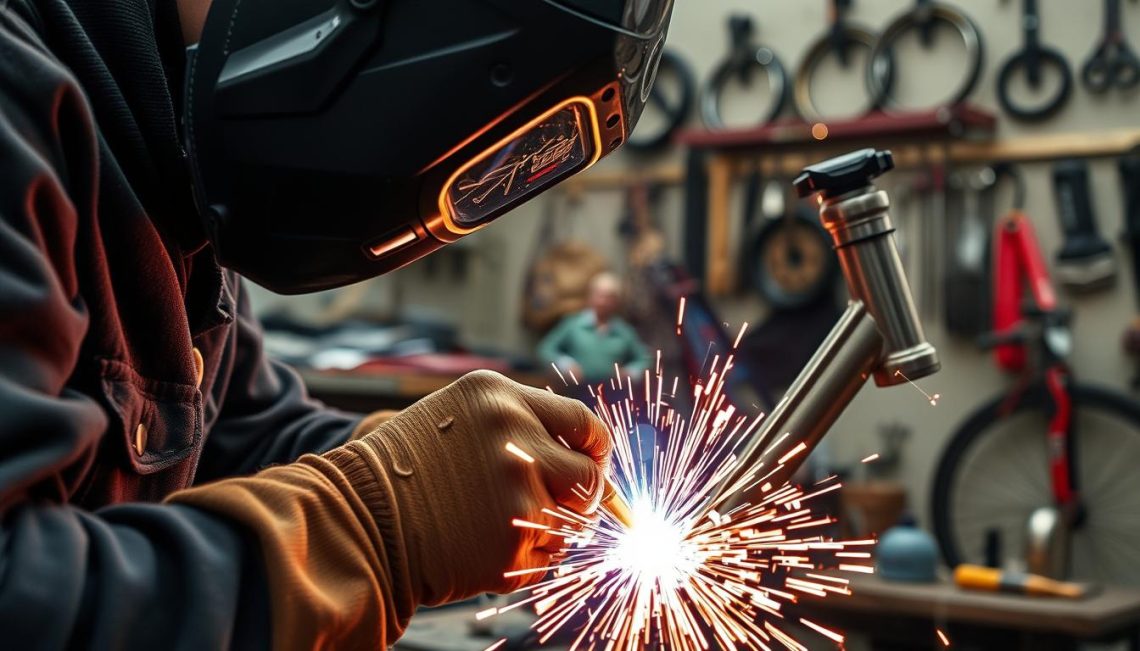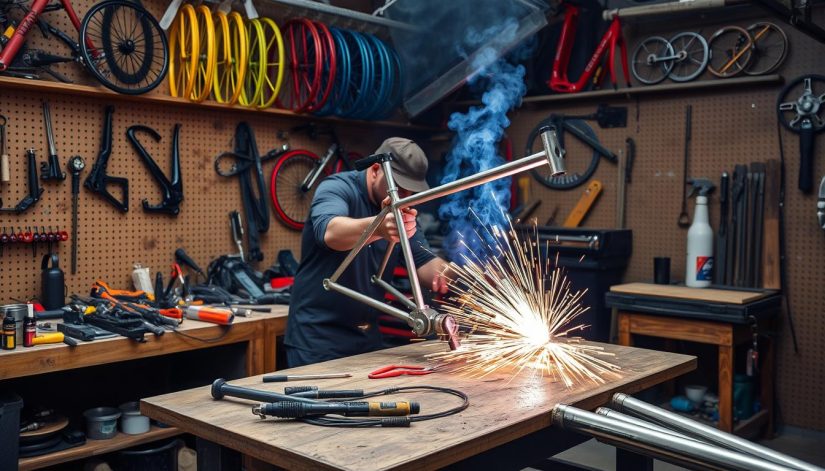In the captivating world of motorcycle customizations, custom bike fabrication stands as a vital cornerstone. Skilled artisans use advanced fabrication techniques to create distinctive motorcycles that not only showcase impressive performance but also inventively reflect the owner’s style. Renowned brands like Indian Motorcycle and Harley-Davidson exemplify the profound impact of motorcycle craftsmanship, consistently pushing the boundaries of design and functionality. As we delve deeper into this nuanced realm, you’ll discover how these techniques intertwine with both aesthetics and performance, ultimately shaping the riding experience.
The Art of Custom Bike Fabrication
Custom bike fabrication requires a keen understanding of various principles that differentiate a unique motorcycle from conventional designs. The basics of bike fabrication form the foundation for learning effective techniques and approaches for creating personalized rides. Aspiring builders should consider aspects such as geometry, balance, and performance while selecting bike building components.
Understanding the Basics
At its core, custom bike fabrication involves several essential elements that contribute to a bike’s overall functionality and aesthetic appeal. Understanding these basics enables builders to create motorcycles that are not only visually striking but also perform exceptionally well. Key considerations include:
- Geometry: Determining the frame’s angles and dimensions influences handling and comfort.
- Balance: Achieving weight distribution affects stability and maneuverability.
- Performance metrics: Knowledge about engine specifications and handling dynamics informs design choices.
Key Materials Used in Custom Bike Building
The choice of custom bike materials significantly impacts durability, weight, and performance. A look at some of the most commonly used materials reveals their characteristics and applications:
| Material | Advantages | Typical Usage |
|---|---|---|
| Steel | Strong, inexpensive, easily welded | Frames and other structural components |
| Aluminum | Lightweight, corrosion-resistant | Frames, wheels, and engine components |
| Composite materials | High strength-to-weight ratio, customizable | Aerodynamic bodywork and specialized components |
The insights from leading industry experts, including renowned builders, guide enthusiasts in selecting the most suitable materials for their projects. Understanding these elements proves crucial for anyone aiming to master the art of custom bike fabrication.
Behind the Scenes: Fabrication Techniques for Custom Bikes
Crafting custom bikes requires a blend of creativity and technical skill, particularly in welding and frame design. The choice of welding techniques for bikes plays a crucial role in the overall quality and durability of the finished product. Understanding the distinct approaches to custom frame fabrication lays the groundwork for achieving innovative designs and impressive performance.
Welding Techniques That Make a Difference
Welding techniques are essential in custom bike construction. Two prevalent methods used in the industry are TIG (Tungsten Inert Gas) and MIG (Metal Inert Gas) welding. Each technique offers unique advantages that suit various bike frame construction methods:
- TIG Welding: Known for its precision and the ability to weld thinner materials, TIG welding is ideal for creating clean and strong joints. Enthusiasts often prefer this method for high-end projects requiring meticulous craftsmanship.
- MIG Welding: This technique is favored for its speed and ease of use, making it suitable for larger production runs. MIG welding can handle thicker materials, thus appealing to custom fabricators aiming for efficiency without sacrificing structural integrity.
Both methods emphasize the need for precision. Connections made using high-quality welding techniques for bikes directly influence the safety and overall performance of the bicycle.
Frame Design and Construction Methods
The art of frame design significantly impacts a bike’s aesthetics and functionality. Different tube shapes and layouts can achieve varying ride qualities and styles. Notable brands like Orange County Choppers exemplify innovative frame designs that have transformed custom frame fabrication.
Several bike frame construction methods come into play, including:
- Stick Frame Construction: Involves welding metal tubes into a rigid structure, offering customizable geometry.
- Monocoque Design: This method creates a single, cohesive structure that often results in lightweight and aerodynamic profiles.
- Sloping Top Tube Design: A contemporary style that adds comfort to the riding experience by lowering the standover height.

Tools of the Trade: Essential Equipment for Fabrication
Every custom bike builder knows that having the right tools is essential for achieving exceptional results. Whether you are just starting or are a seasoned pro, understanding the tools for custom bike building can elevate your craftsmanship significantly. From the initial design phase to the final touches, having the proper hand tools and advanced machinery makes all the difference in quality and precision.
Essential Hand Tools for Custom Bike Builders
Hand tools form the backbone of any bike fabrication workshop. Wrenches, screwdrivers, and pliers are a must-have for everyday tasks. Brands like Park Tool and Pedro’s offer reliable options for bike-specific hand tools that can handle the unique challenges of custom fabrication. These essential bike fabrication equipment items ensure that every component fits perfectly and works harmoniously. Investing in good quality hand tools can save time and minimize frustration during the building process.
Advanced Machinery and Technology in Bike Fabrication
As technology progresses, so does the ability to create intricate designs with advanced bike fabrication technology. Plasma cutters and CNC machines have become indispensable for modern builders, allowing for more precise cuts and shapes. Moreover, computer-aided design (CAD) software and 3D printing are revolutionizing how custom bikes are manufactured. These innovations not only enhance customization options but also improve overall efficiency in fabricating components that meet the highest standards. Embracing these tools can lead to innovative designs that stand out in the custom bike market.

